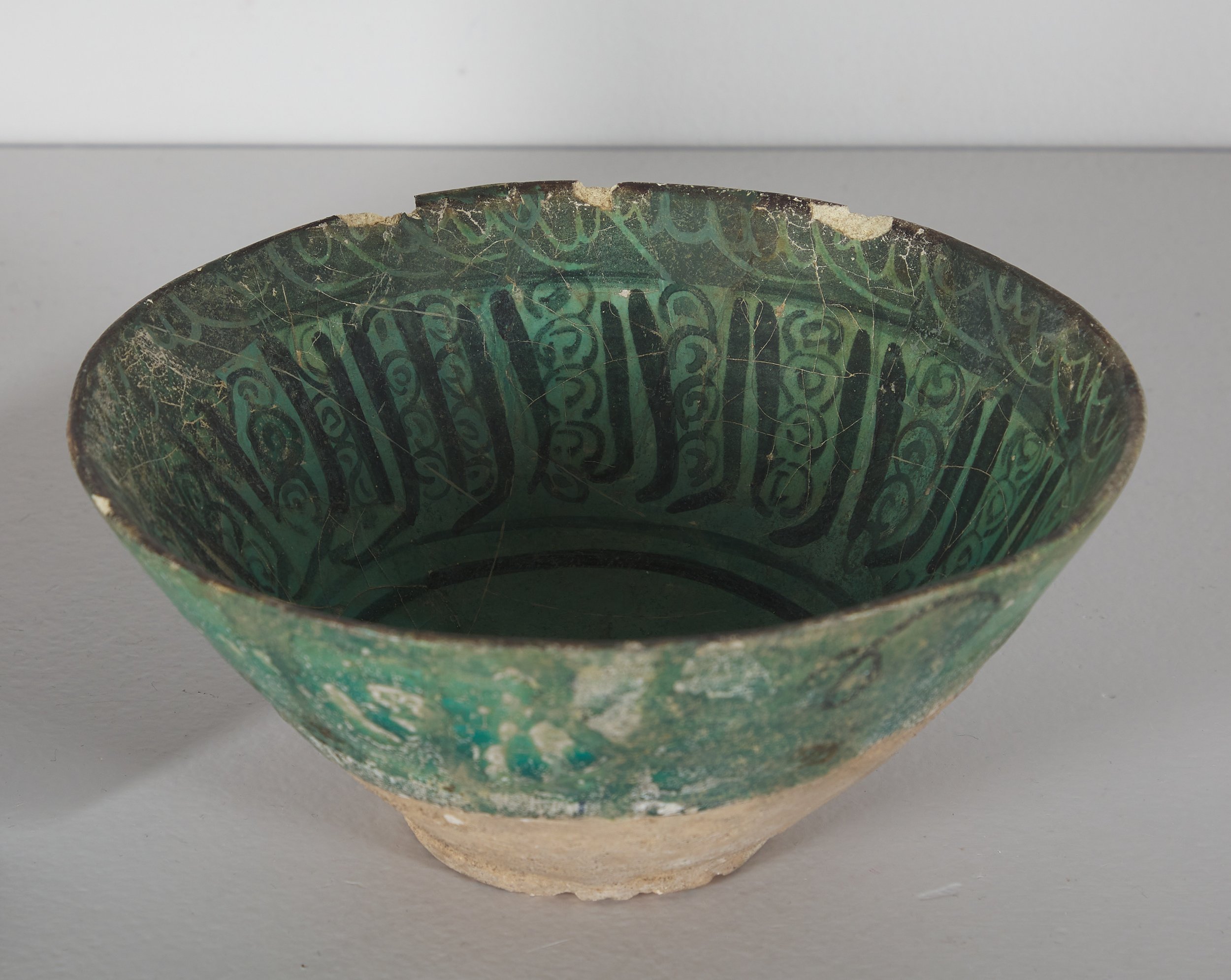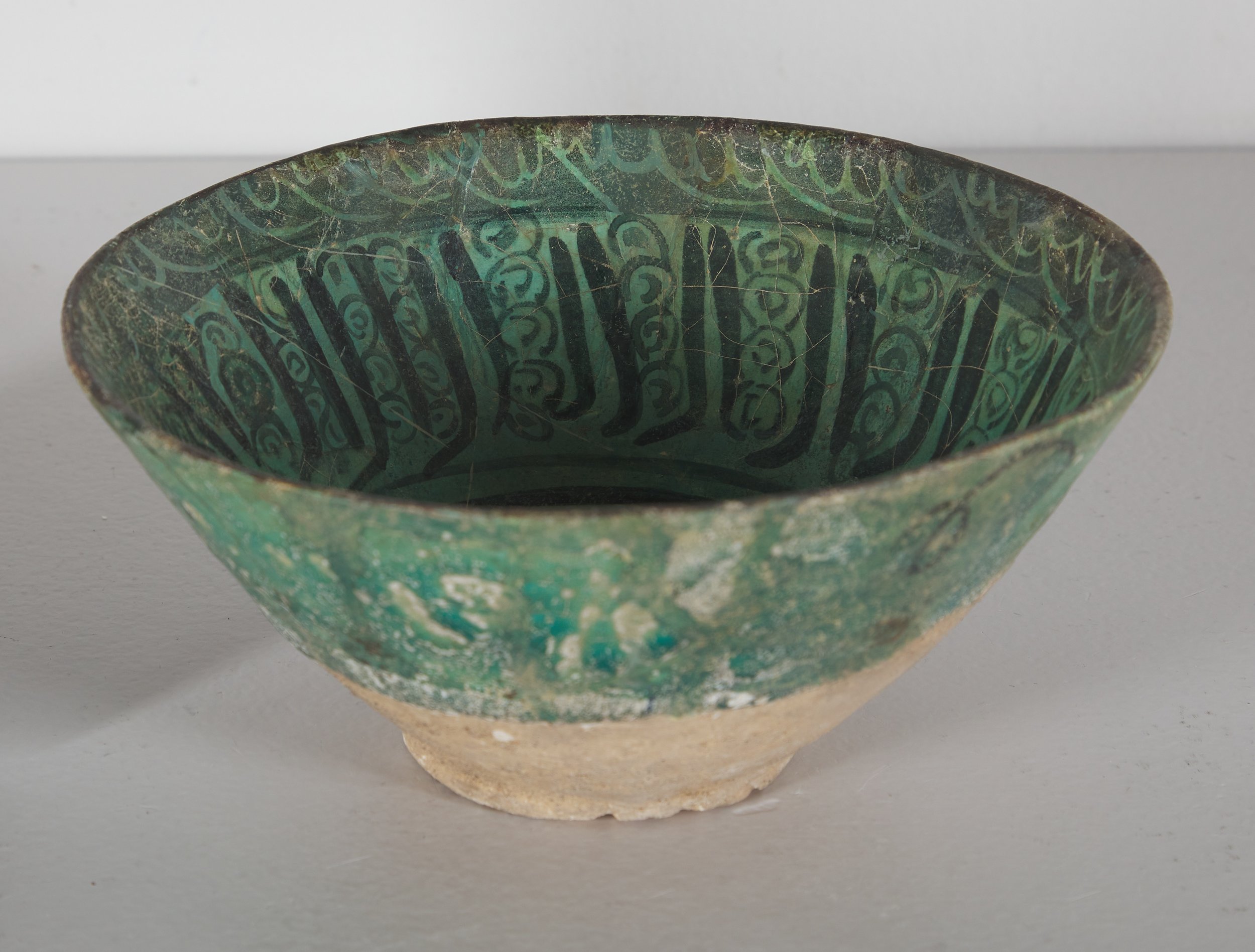When this striking turquoise ceramic bowl arrived at The Center for treatment, it immediately caught the attention of our objects conservator, with its history and character. This dish is low-fired ceramic and finished with a lovely glaze on the interior and half of the exterior with decorative hand-painted bands and curved motifs. Although we are unsure how old this Persian dish is, our conservator's examination showed that this object had survived a long life so far.
Before Treatment
Four ceramic losses were immediately noted at the bowl's rim, varying in size but all less than 1-inch square, and minor ceramic losses on the edge base in a 1.5-inch section. Glaze fractures were also present throughout the surface, and minimal glaze abrasions and losses were consistent with age.
Left and Above: Before Treatment
But upon further examination, the conservator was discovered that this was not going to be the first conservation campaign that the bowl has experienced. Testing revealed previous fills and inpainting throughout approximately 30% of the bowl. Fortunately, that work has been professionally done and well-executed and would not need to be addressed during treatment. The fills and inpainting can be seen clearly under ultraviolet light.
Interior of bowl under UV light
Exterior of bowl under UV light; the previous repairs fluoresce under the UV light and are visible as the bright green network of lines.
As is usually the case with object conservation, the first step of the treatment was to clean the surface gently, but in this case with particular attention was paid to avoid altering the colorwork of the previous inpainting. Then, the four losses on the rim of the bowl were consolidated and filled with conservation-grade materials.
Detail of rim after treatment.
The final step was to inpaint the fills to integrate with the surrounding surface by testing options and determining the best painting technique and materials to emulate the glaze and the original surface, so that the repair are visually integrated.








